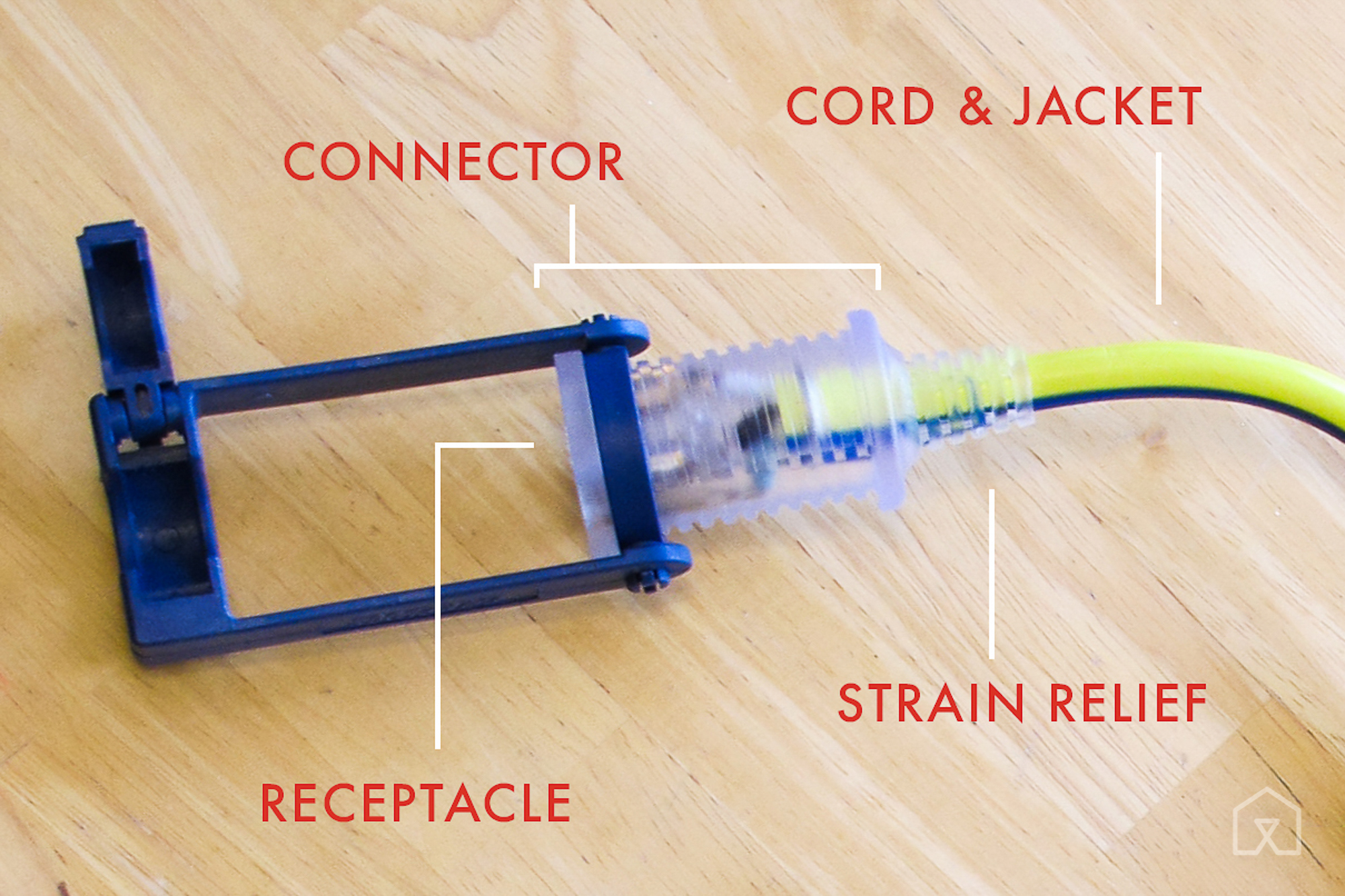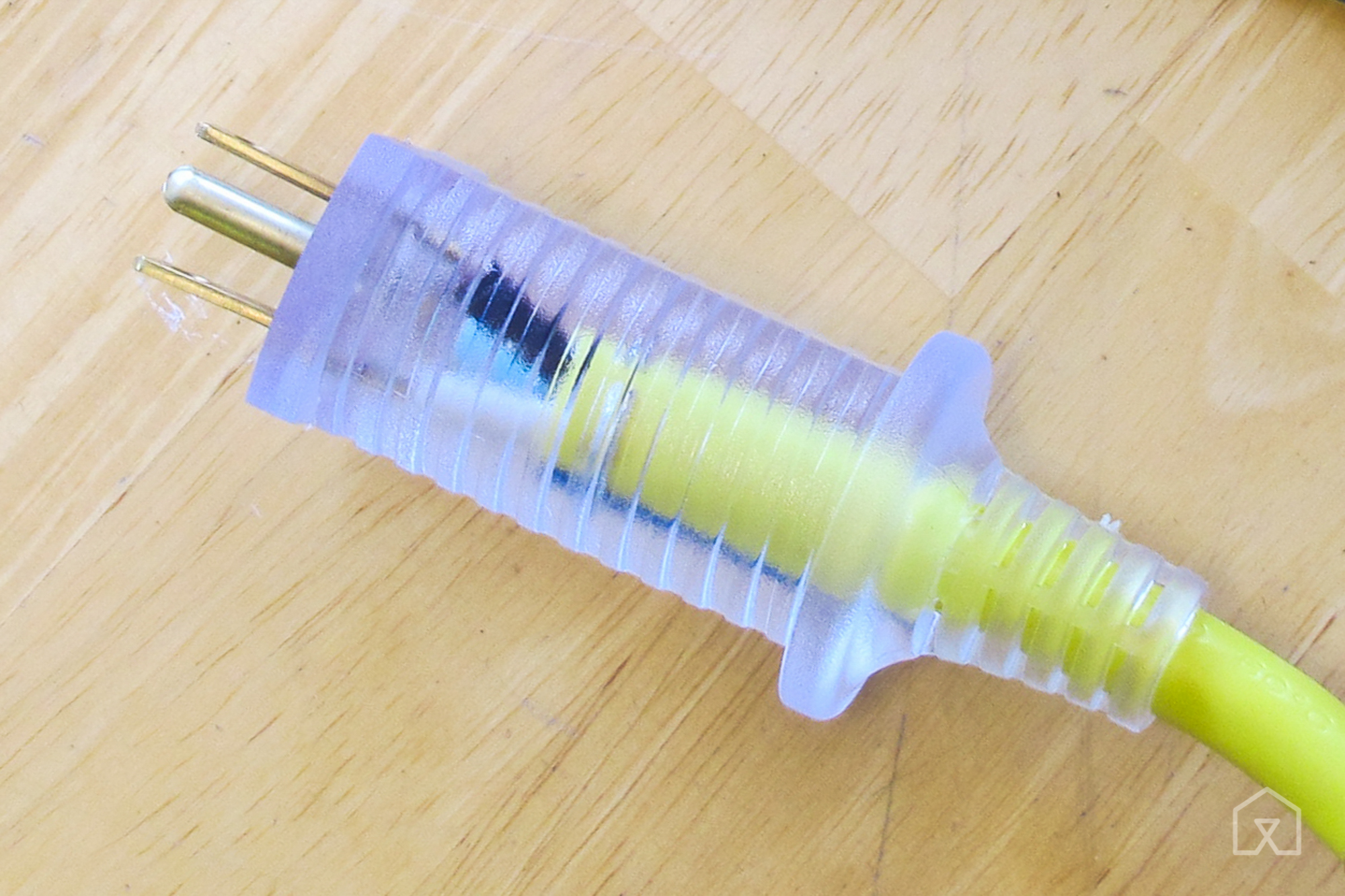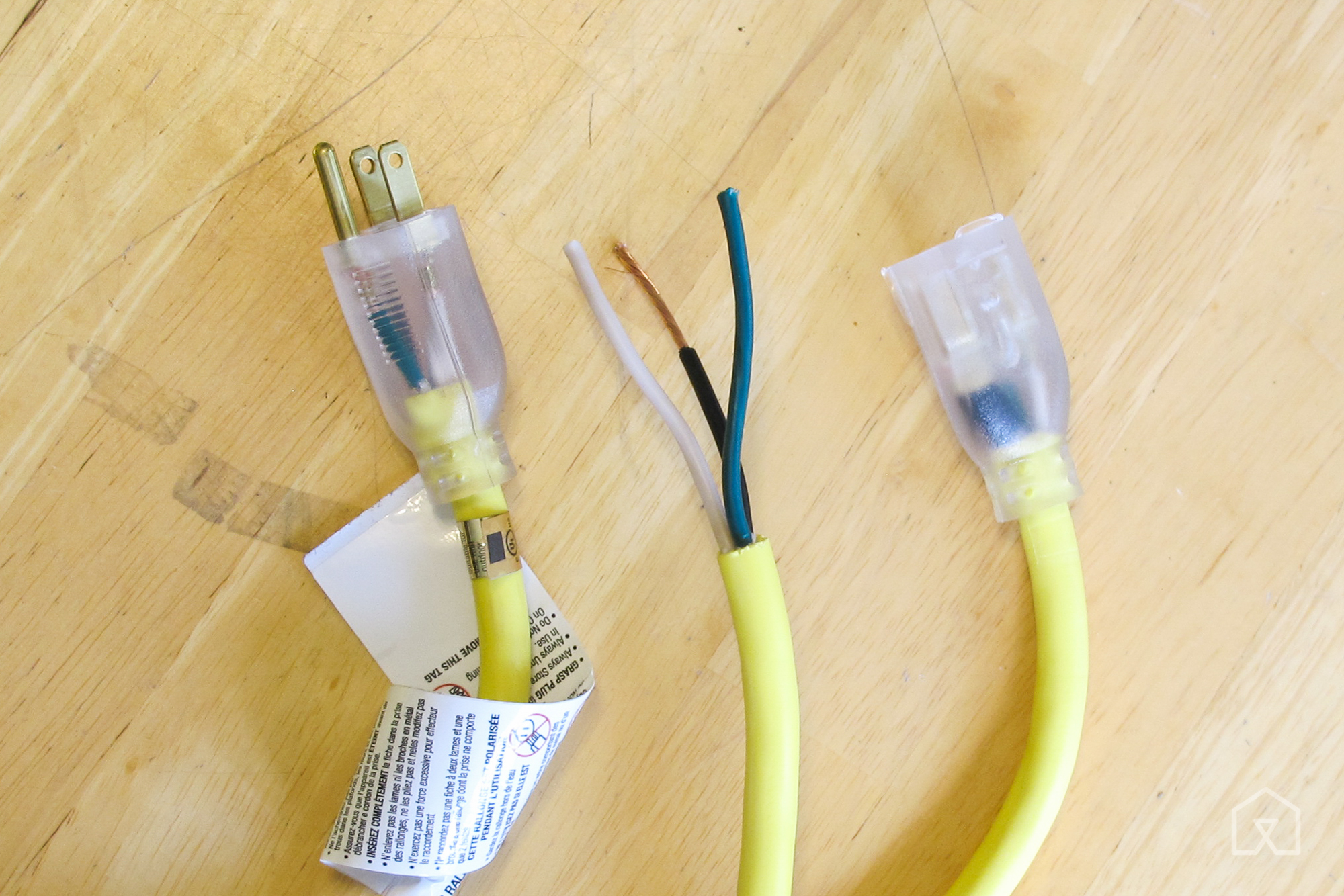Which cord you need
It’s easy to head to the hardware store and grab the cheapest extension cord in the length you need, but not all cords are created for the same tasks. The most versatile cords are stamped with a W (in a rating that looks something like “SJTW”) to signify that the jacket is moisture and UV light resistant. That means it’s rated for use in a sunny backyard or a damp basement. Because a well-cared-for extension cord should last years, through any type of household use, all of our top picks 25 feet or longer are either W-rated or otherwise moisture and UV resistant.
The more current you plan to pull through a cord, the thicker (lower gauge number) the conductive wire needs to be. Additionally, longer distances require thicker wires to keep the voltage steady from start to finish. If your wire is too thin for the distance and current that you need, resistance in the cord will cause heat to build up, which eventually leads to a melted jacket, sparks, and fire. For more on extension cord safety and care and maintenance, read our full guide.
How we picked

We looked at each part of a cord to compare how well they’re made to handle years of use and abuse. Photo: Mark Smirniotis
After looking at the ratings and cost per foot of models from multiple retailers, we examined the construction of each cord relative to one another to find the details that set the best ones apart. Because there aren’t many editorial extension cord reviews, we looked at user reviews to get a sense of the long-term durability of the cords we considered.
We looked at cords on Amazon, and for the best reasonably priced cords available in big-box hardware stores. We cut each cord open to measure how the copper conductors, their individual jackets, and outer jackets contributed to a cord’s diameter.
On top of that, we made note of how the receiving end of the extension cord accepted a plug. We also looked at each plug’s strain-relief neck connection, which prevents the plug and cord from pulling away from each other and exposing the wiring inside.
Our favorite extension cords are 50 feet long

The strain relief neck on the Voltec cord is much longer and more durable than any other cord’s. Photo: Mark Smirniotis
If you get only one extension cord, get the Voltec Industries 50-ft Yellow Outdoor Extension Cord. It’s not much more expensive than the cords you’ll find in store, but it blows them away in terms of cable quality, connector durability—and most notably—the connection fit. We think 50 feet is a good catchall size, as it’s enough to get around a two-car garage, and feed power from one room to another room. It’s also not as heavy, cumbersome, or expensive as a 100-foot cord. The biggest downside to the Voltec cord is that the huge, durable connector may not fit into tight receptacles—particularly on yard equipment like leaf blowers or hedge trimmers.
Runner-up: Less tough for less money, and better with yard equipment

The US Wire cord doesn’t have quite as nice a connection or as strong a strain relief as our top pick, but it’s up to 30 percent cheaper. Photo: Mark Smirniotis
If you want to save a few bucks but still want a quality extension cord, the US Wire 740XX series of cords is almost as good as our top pick from Voltec. Part of what we loved about the Voltec was how smooth yet strong the connection was between it and a device cord. US Wire doesn’t perfectly duplicate this feeling, but there’s equally little chance that you’ll have to force a plug in or have one fall out.
The most obvious sacrifice is the less robust strain-relief neck. Though the connector itself is lighted from within and solid—just like on the Voltec—the neck of the cord isn’t any longer than the average cord. Because this is an obvious point of failure, we think the Voltec is worth the slightly higher price in most cases.
Shorter and longer cords
Both of our favorite and runner-up 50-foot cord picks have a 25-foot version with the same features. Though we looked only at one size of each cord, we found no difference in specs or information about the other cords from the same product line. Overall though, 50-foot cords are a better value—our 50-foot picks cost 92¢ and 65¢ per foot compared with $1.12 and 92¢ per foot, respectively, in the 25-foot versions.
If you need a longer cord, the 100-foot version of the Voltec cord still has the sturdier strain-relief neck that makes it a more durable cord overall. Though we didn’t go hands-on with the 100-foot version, all the same specs apply. But 100-foot cords get expensive and heavy, and we realize that not everyone is going to want to spend quite so much. In that case, the US Wire 74100 100-Feet Extension Cord is a completely reasonable option and roughly 30 percent cheaper.
Our pick for light-duty, indoor use

Photo: Mark Smirniotis
Indoor cords are meant only for simple, low-power uses like reaching a lamp on your side table or plugging in a phone charger. We recommend the GE Wall Hugger Extension Cord over the cheap cords that you’ll find in all corners of the Internet and discount stores for two reasons. First, the flat plug is safer and less likely to get knocked out when plugged in behind furniture, and second, it’s properly tested and rated.
If you decide to grab one of these at a local shop, look for a UL or Intertek ETL safety rating, and spend a couple bucks more to get a cord from a brand you recognize. For more on extension cord safety, read our full guide.
This guide may have been updated by The Sweethome. To see the current recommendation, please go here.
Note from The Sweethome: When readers choose to buy our independently chosen editorial picks, we may earn affiliate commissions that support our work.




